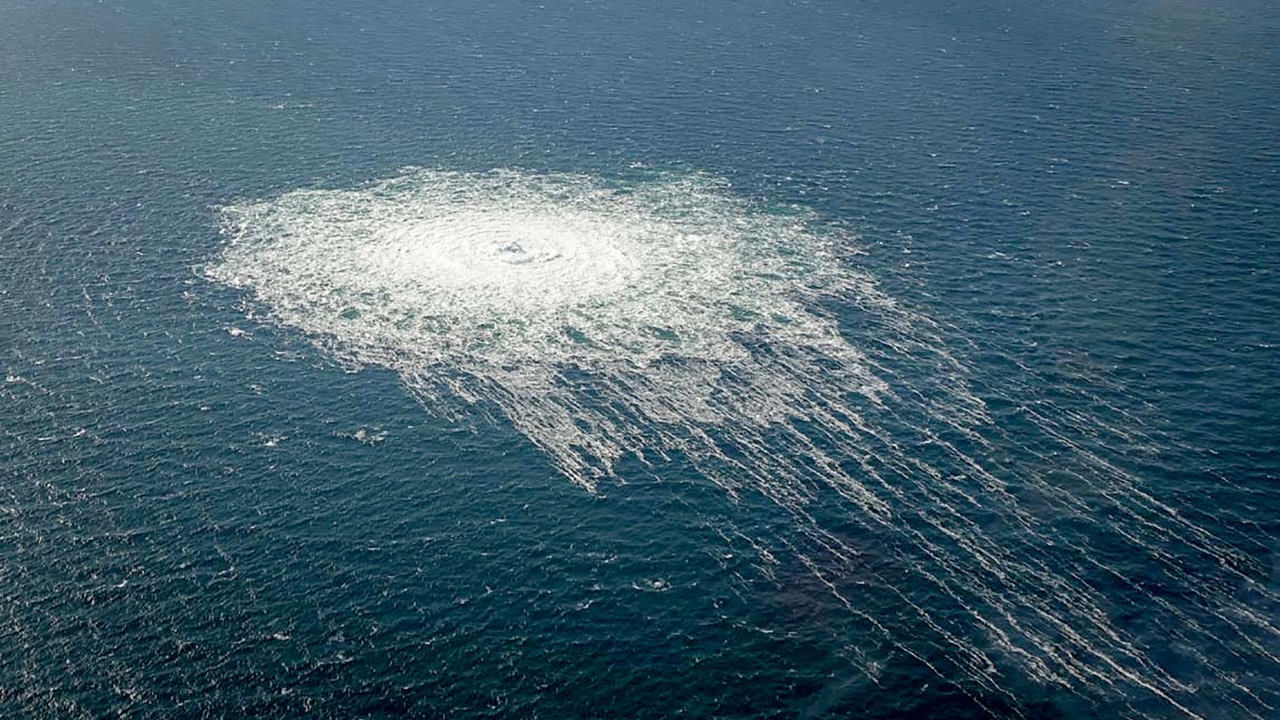Stockholm (People's Daily) - At least 50 meters of the Nord Stream 1 pipeline has been destroyed or buried under the seafloor following assumed sabotage, underwater images published on Tuesday showed. Denmark's police meanwhile said its investigations had confirmed the leaks from late September were caused by explosions.

This handout picture released on September 27, 2022 by the Danish Defence Command shows the gas leak at the Nord Stream 2 gas pipeline off the Danish Baltic island of Bornholm. (Photo via AFP)
In videos published by Swedish newspaper Expressen, a massive tear and twisted metal can be seen on the Nord Stream 1 pipeline 80 meters down.
According to the newspaper, the videos that were filmed on Monday show that over 50 meters of the pipeline is either missing or buried under the seabed, and long tears can be observed on the seabed leading up to the burst pipe.
"It is only an extreme force that can bend metal that thick in the way we are seeing," Trond Larsen, drone operator with the Norwegian company Blueye Robotics, told Expressen.
Larsen, who piloted the submersible drone which captured the video, also said you could also see "a very large impact on the seabed around the pipe."
Investigations by Denmark's police, military and intelligence service PET have meanwhile confirmed that the leaks at Nord Stream 1 and 2 were caused by explosions, the Danish police said in a statement on Tuesday.
Copenhagen police and PET are working together on the investigation into what caused the leakages, the statement said.
"Investigations have confirmed that extensive damage occurred to Nord Stream 1 and 2 in Denmark's exclusive economic zone and that the damage was caused by powerful explosions," the written statement said.
Copenhagen police said it was too early to say when the investigation would be complete, but that it would continue to work closely with "relevant authorities in Denmark and abroad" to examine the explosion sites.
The two Nord Stream pipelines were damaged by explosions under the Baltic Sea at the end of September, causing four leaks.
While the leaks were in international waters, two of them were in Denmark's exclusive economic zone and two of them in Sweden's.


